2014. November 18.
Prof. Alain Goriely researcher from Oxford made a presentation on the Applied Mathematics Day of BME.
Knot theory, global energy balance, butterfly effect, weather forecasting, geometry of gastropod shells or physical laws of brain injuries – these topics seem to be far from one another, still mathematical modelling provides a uniform background for them, as Professor Alain Goriely from Oxford presented in his lecture at the Applied Mathematics Day.
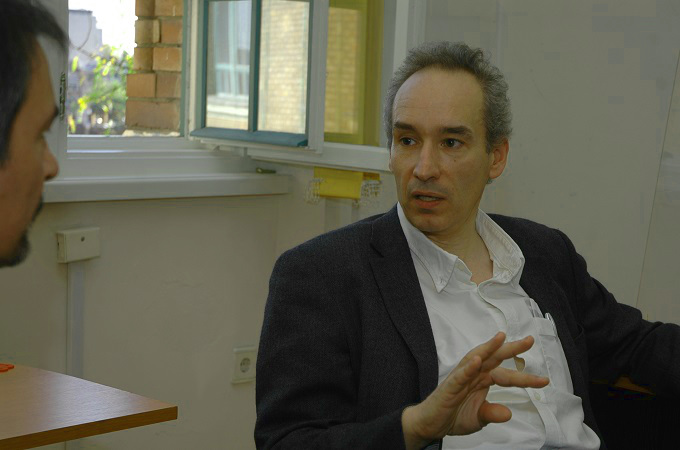
„Mathematics is the most evident tool to understand key issues of applied sciences and what is even more important is it can be used to approach and address crucial problems of society,” said Professor Goriely, Director of the Oxford Centre for Collaborative Applied Mathematics (OCCAM) and a renowned expert in mathematical modelling. „In my lecture I presented the process of mathematical modelling, the steps that are to be followed to translate a given scientific problem into the language of mathematics. What is the essence of mathematical modelling? how valuable is it? and when does it give valid answers? Many researchers just keep focusing on their specific scientific areas and are not interested in general laws or findings that can lead to general solutions, quantitative modelling approach may offer a completely original contribution.”
|
Alain Goriely studied in Brussels then worked for the University of Arizona (Tucson) as a professor. Trained as a physicist, his main scientific area is the geometry of certain filament structures, like DNA molecules, plant tendrils, hyphae and also artificial objects, cables and wires. Professor Goriely discovered the basic phenomenon that has been researched by many others since then that these thin filament structures can form spiral-shapes and the orientation of the spiral may change. Alain Goriely has been working in Oxford since 2009 and aside from being the leader of OCCAM he is also the Co-Director of the Oxford Martin School’s Programme on Solar Energy. The title of his lecture held on the Applied Mathematics Day was ’What Mathematics Really Does: From Brain to Climate’. |
Professor Goriely is the leader of numerous research projects in Oxford. The aim of the ’Modelling solid-fluid interactions in the brain’ project is to understand the effect mechanisms of pressure caused by brain oedemas occurring after injuries, which may improve results of surgical interventions and treatment of such symptoms. The project titled ’ Mathematical modelling of growth in physical and biological systems’ has brought significant results that are used to understand growing of tumours, healing of wounds and complex evolution of certain biological structures.
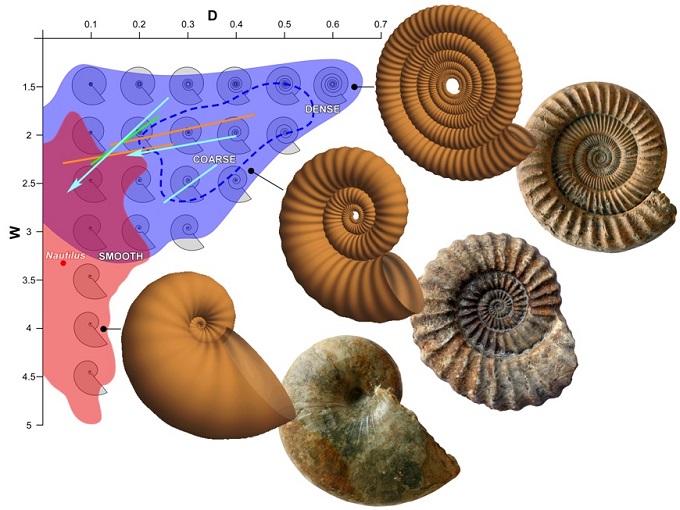 ’Modelling of shapes of ammonites with geometric evolution model’
’Modelling of shapes of ammonites with geometric evolution model’
„I have found various interesting scientific problems that originated from engineering, physics or material sciences,” he emphasized. Together with my colleagues I examine several fundamental issues that affect everyday life, like the problems related to climate changes; still I find that the largest number of interesting topics emerge from biology.”
In the research groups of OCCAM scientists representing various fields – physicists, climatologists, biologists, physicians and industry experts – work together with mathematicians to solve various scientific problems. „Most sciences apply quantitative models and solutions but we cannot expect researchers of all fields to approach each issue with a mathematic concept – this is how we can help them,” explains Professor Goriely.
University of Oxford opened the new building of the Mathematical Institute last year where department members of OCCAM and other researchers work in the most state-of-the-art environment. Members of the institute work in close collaboration with other units of the university and they also have an extended and flexible network of scientist colleagues. „Decision makers of the University of Oxford realised that it is worth investing in applied mathematics because this area – as I pointed out in my lecture – is not only a specific field of mathematics but also a very useful tool for other sciences; it can present new concepts and models. It is not sure that the method used at the University of Oxford is to be followed generally, though it seems that a very cost-efficient method was used for the benefit of other disciplines. Applied mathematics is regarded as a link between other areas of science, therefore resources spent on it will bring profit in a wider sense; cooperation can make other fields of science better and more productive,” summarized Professor Alain Goriely.
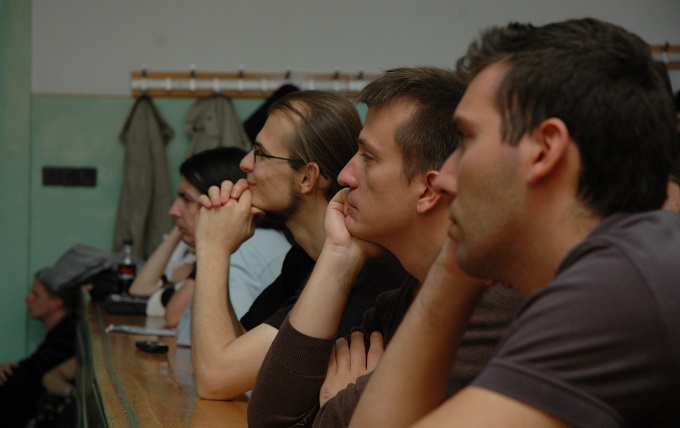
|
Besides serious scientific activities mathematicians sometimes meet some lighter issues to deal with. An example for that is when OCCAM got a commission from the Warner Brothers Studio in 2010: they were looking for experts for the Sherlock Holmes 2 – A Game of Shadows film, directed by Guy Ritchie, starring Robert Downey Junior and Jude Law. A main character of the film is Professor James Moriarty, archenemy of Holmes, who is a university professor and a criminal mastermind. The fictional character was featured in several Sherlock Holmes novels and is described as the „Napoleon of crime„ with a special mastery of mathematics. In one of the stories it is mentioned that he wrote a book on the dynamics of asteroids but the author, Conan Doyle did not give any further details about his character’s scientific activity. Alain Goriely and his colleague, Derek E. Moulton undertook to contribute to the film: originally their task was to set up the correct and authentic equations written on the huge blackboard in Moriarty’s room but during their mission they described the whole scientific profile of the character. For perfect authenticity the two researchers studied the history of mathematics in the end of the 19th century and collected the studies and problems that the character could be working on. They created the codes that the scientist used in his correspondence with his supporters and also determined the topic of the series of lectures that the professor held in various cities of Europe. Eventually all the equations were written on the huge blackboard that could be interesting for the story of the film and also at the time. The researchers also elaborated how Sherlock Holmes should decrypt the codes. The main motivation of the two researchers was to present real mathematics on the screen. The film was absolutely authentic from mathematical aspect but in this version of the story Sherlock Holmes also uses his physical force against the evil professor and not only his famous logic. |
On the Applied Mathematics Day laboratories of BME also presented:
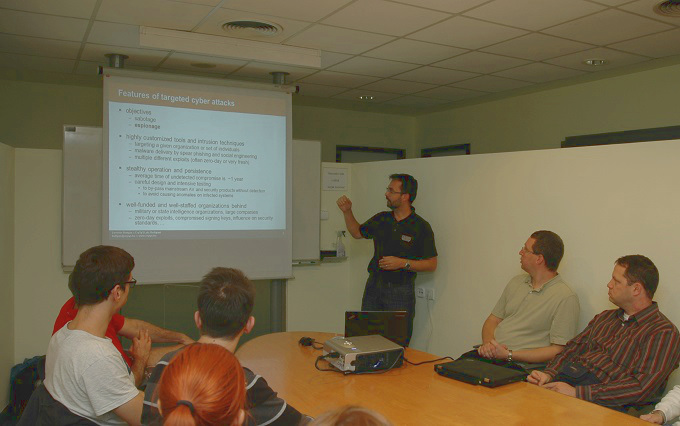
CrySyS Laboratory of Cryptography and System Security
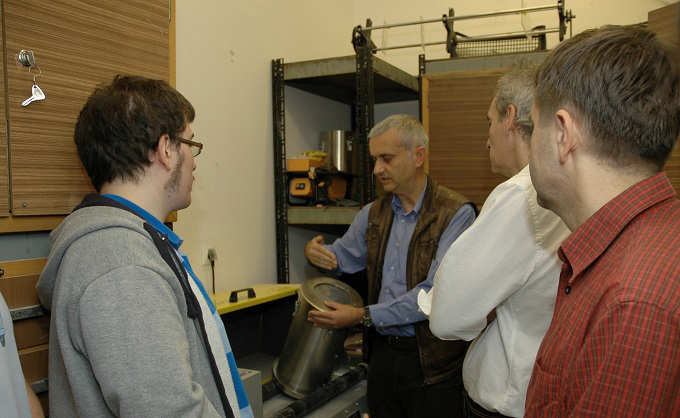
Gábor Domokos presents the specially modified abrasive machine of the Morphology Laboratory
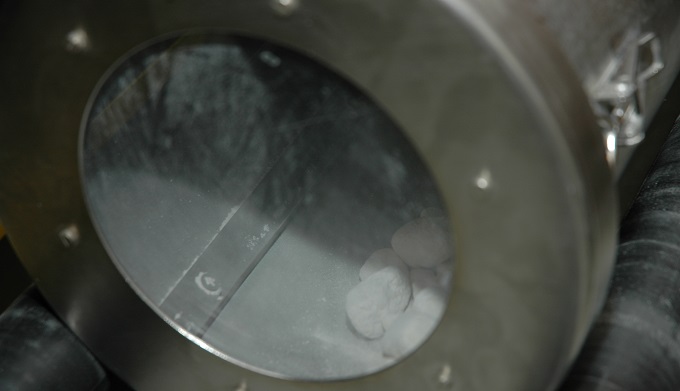
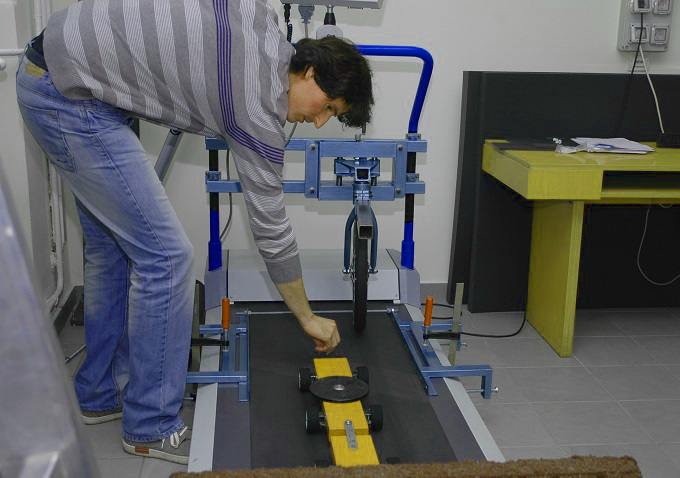
Mechanical Engineering Laboratory: Experimental examination of a trailer on a car treadmill with a 1:10 scale model
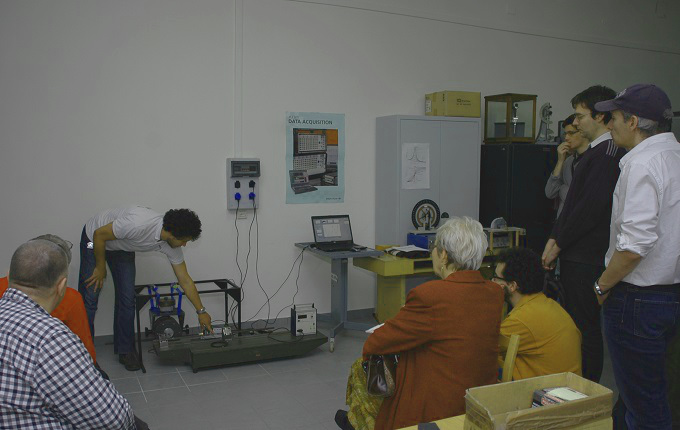
Mechanical Engineering Laboratory: non-linear experimental analysis of a rod with driven, large amplitude oscillation.
- HA -
Photos: Erik Pintér


